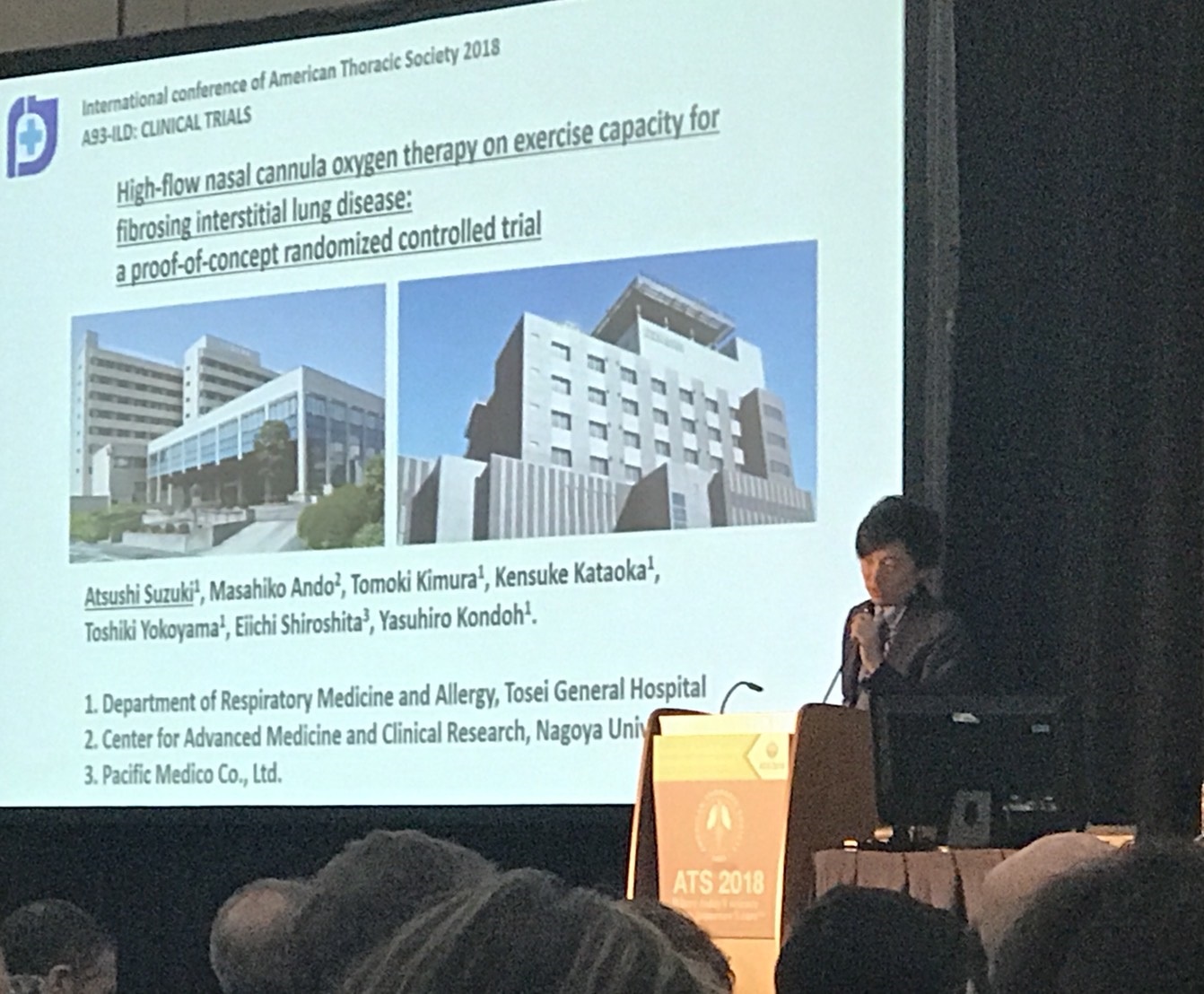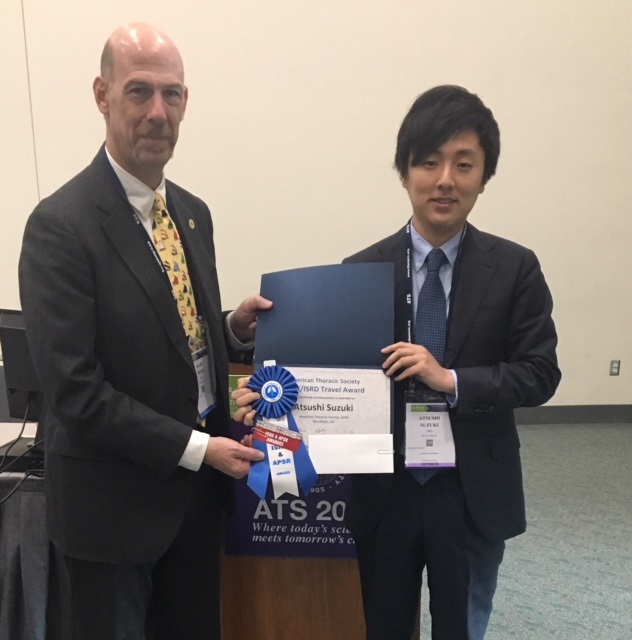Atsushi Suzuki
Department of Respiratory Medicine and Allergy, Tosei General Hospital, Japan; Department of Respiratory Medicine, Nagoya University Graduate School of Medicine, Japan
APSR/ISRD Session at the ATS International Conference 2018 - post-session report

I am very honoured to have been chosen as the awardee of the Best Abstract by the APSR-ISRD Joint-Session at the ATS International Conference in San Diego, 2018. The ATS conference always provides me with great opportunities to discuss the recent clinical advancements and collaborate with various foreign doctors.
I got an opportunity to conduct the research presentation in Mini Symposium entitled "A93-ILD: CLINICAL TRIALS". The title of my presentation was "High-flow nasal cannula oxygen therapy on exercise capacity for fibrosing interstitial lung disease: a proof-of-concept randomized controlled trial". Fibrotic interstitial lung disease (FILD) is characterized by abnormalities in ventilator mechanics and gas exchange, resulting in exertion dyspnea and exercise limitations. There are no currently proven beneficial management methods for exercise limitations in patients with FILD. High-flow nasal cannula (HFNC) oxygen therapy is a novel treatment, which has become widespread in various clinical settings. We hypothesized that HFNC oxygen therapy might be superior to conventional oxygen therapy for improving exercise capacity in FILD patients. We performed a prospective randomized controlled crossover trial with an endurance exercise tolerance test using HFNC (50L/min, FiO2 0.5) and a venturi mask (VM) (15L/min, FiO2 0.5) for oxygen delivery in FILD patients. Both HFNC and VM significantly improved endurance time and minimum SpO2 (baseline: 3.9 ± 3.3min, 77.7 ± 6.6%; HFNC: 6.8 ± 4.7min, 89.7 ± 9.3%; VM: 7.6 ± 6.3min, 89.4 ± 9.3%) compared with the baseline test. Although HFNC did not exceed the efficacy of VM in endurance time, it significantly improved exertion dyspnea in FILD patients. From our findings, HFNC might have potential benefits for improving exertion dyspnea in FILD patients.
I am most grateful to the team members for giving me this opportunity: Dr Yasuhiro Kondoh, Dr Tomoki Kimura, Dr Kensuke Kataoka, Dr Toshiki Yokoyama, Department of Respiratory Medicine and Allergy, Tosei General Hospital; Dr Masahiko Ando, Center for Advanced Medicine and Clinical Research, Nagoya University Hospital. I also greatly appreciate the following people for their support: Tomoya Ogawa, Fumiko Watanabe, Jun Hirasawa, Takuya Mishima, Takuro Furukawa, Yusuke Nagae, Kazuya Shingai, and Yuko Kokubo, Department of Rehabilitation, Tosei General Hospital; Sayaka Tsukada, Department of Medical Engineering, Tosei General Hospital. They all are amazing professionals who deserve this award just as much as I do.
Additionally, I presented other clinical research in Rapid Abstract Poster Discussion Session entitled "A103- ILD: OUTCOMES". The title of presentation was "Acute exacerbations of fibrosing interstitial lung diseases; incidence, risk factors, and outcome". In this study, we demonstrated that all forms of FILD are at risk of acute exacerbation and have a similar outcome to acute exacerbation of idiopathic pulmonary fibrosis. Regarding this presentation, I would like to thank my colleague, Dr Jun Fukihara, for supporting me.
Once again, I would like to sincerely thank the APSR and ISRD for providing me with this great award. I hope further world collaboration will expand.

